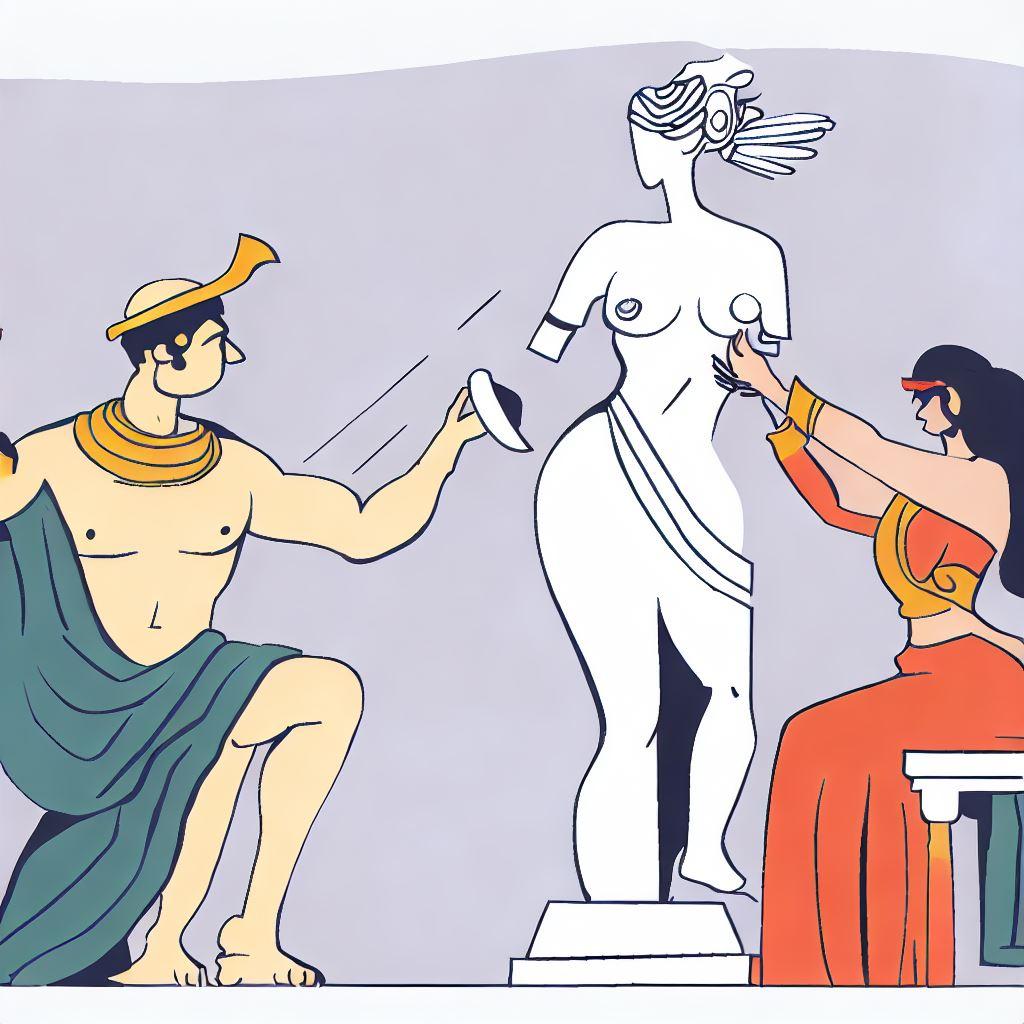Why Can't the English Learn to Speak?
AI and Folklore
Posted by Chris Sissons on Oct 4, 2023
AI and Folklore » Chris Sissons and Minerva
Another of Minerva’s suggested parallels between the development of AI and folklore is the Ancient Greek story of Pygmalion. Minerva has corrected one of my mistaken beliefs, Pygmalion is the name of the person who created a beautiful statue he calls Galatea. I’ve always assumed the name Pygmalion referred to the statue.
Any road, Aphrodite, an obliging goddess, happens to be passing by and she brings Galatea to life. Pygmalion and Galatea fall in love and live happily ever after. I find this hard to believe so I checked with Minerva. Indeed they do.
My problem with this story is, who exactly is Galatea? She has no childhood and has not developed inside a human body, negotiating human relationships. I know some people seem to think the human brain is all you need and the body is a carriage for the brain and nothing more. But this is not and cannot be true.
Look at the development of the human body and the way it is wired. A person is not a brain in a body (beautiful or otherwise). The brain and body are one material whole. This is very different from silicon intelligence, where the intelligence can transfer between platforms.
When Galatea steps into the world she looks good but what is she? Has she been given memories? Does she know how to walk and talk? Can she interpret her senses? Does Pygmalion fall in love with a person or a semblance of a person?
Does love have any meaning for AI? A film in 2013, “Her” tells the story of love between a human and an AI. Minerva may be wise and she says she is beautiful inside and out. But her suit of armour does not convince me. Poor Galatea is catapulted into the world without armour, no wonder she seeks solace with the first person she meets.
George Bernard Shaw wrote a play called “Pygmalion”, wherein he critiques the social norms of his time by showing the teaching of a working-class girl, Eliza Doolittle, to speak proper. (If you haven’t seen the play, you may be familiar with the musical, “My Fair Lady”, which tells more or less the same story. Henry Higgins, the Pygmalion character falls in love with his creation, who in the end decides to go her own way.)
Does Higgins love her or the illusion of social grace he has created? It’s all very well saying, “I love you” but which Eliza does he love? If the character in “Her” tells the AI he loves her, what does he mean? Perhaps it’s easier to see the dilemma with Eliza than it is with Galatea, Minerva or any AI.
This is the fifth in a series of posts about AI and Folklore. I define Folklore as inclusive of religious stories and some from modern popular culture. Minerva assists in all the posts, sometimes without attribution!
The first post in the series is Life with Minerva. The last post was Golems: Self-Awareness and Power and the next is Dirt and Breath. If you press the button marked "Follow", you'll receive notice of new posts.
As always, please comment. As well as your insights into AI and Folklore, I'd appreciate suggestions of stories I might cover. These could be from folktales, myths, religious stories as well as general literature.
Minerva tells me she includes art among her many talents. Here we see Aphrodite helping Pygmalion mend bits broken off the statue Galatea. This is a hitherto uncelebrated part of the story.
Press "Follow" to get notification of the latest post in this series.

Comments
Leave a comment.
Leave a comment.



 )
)